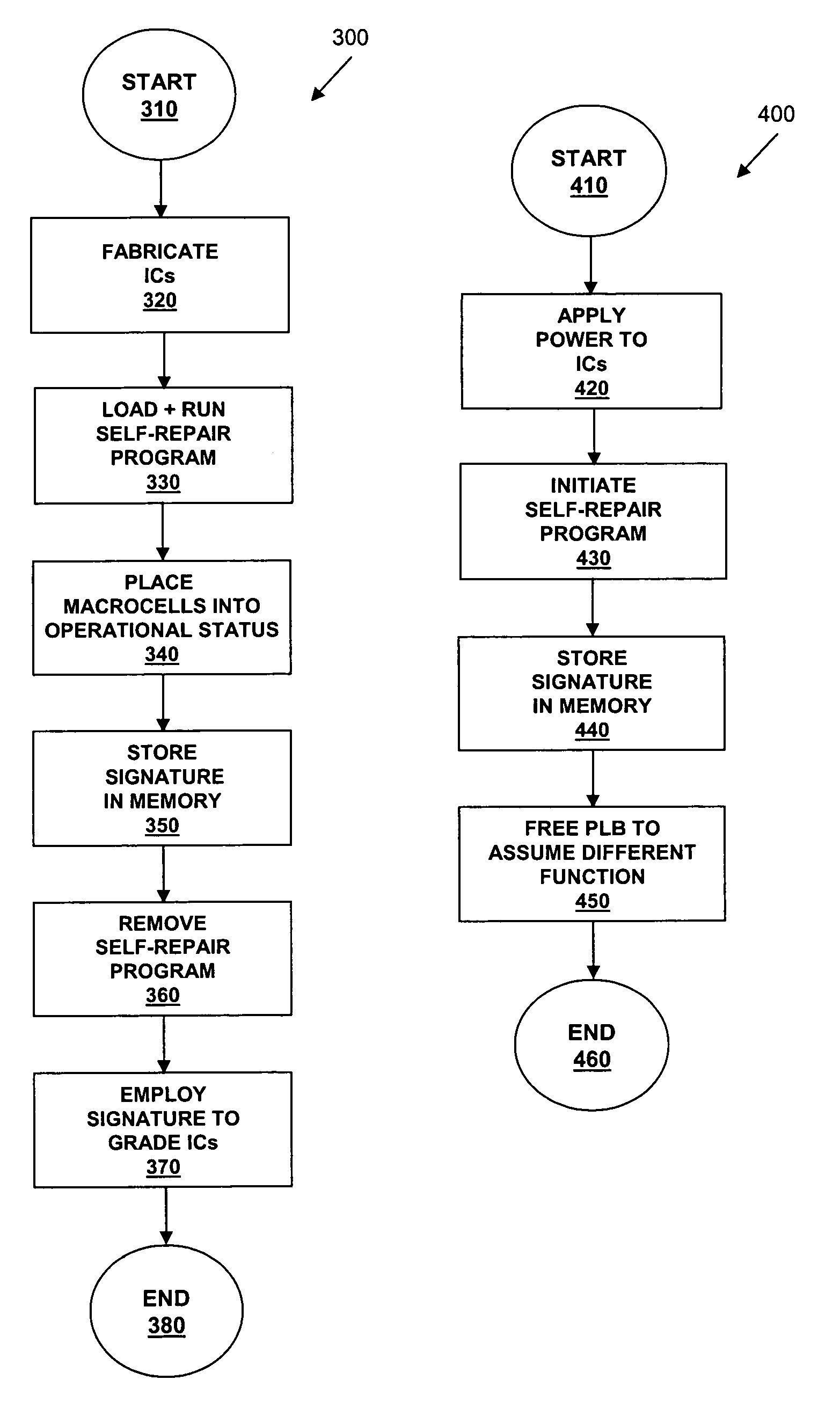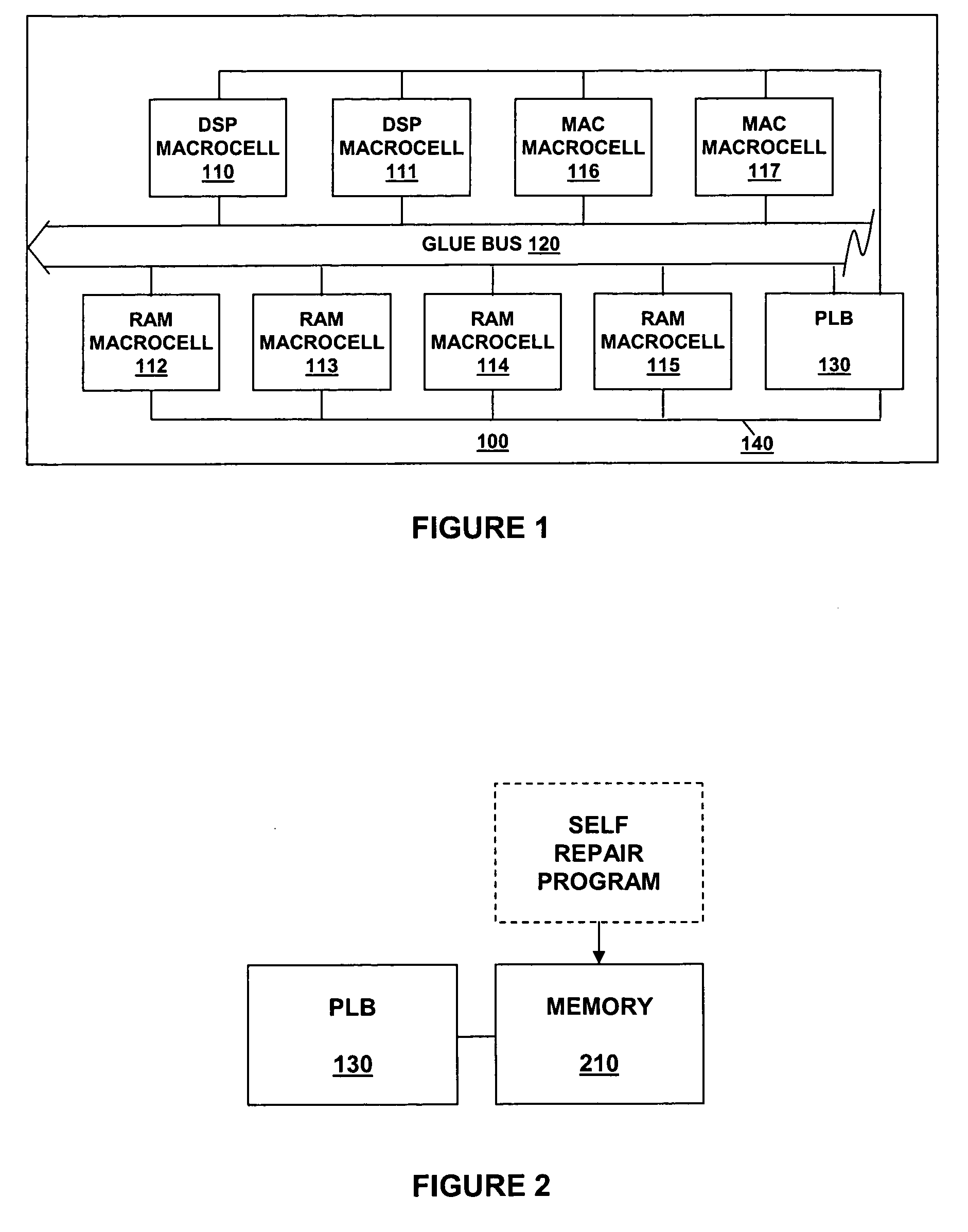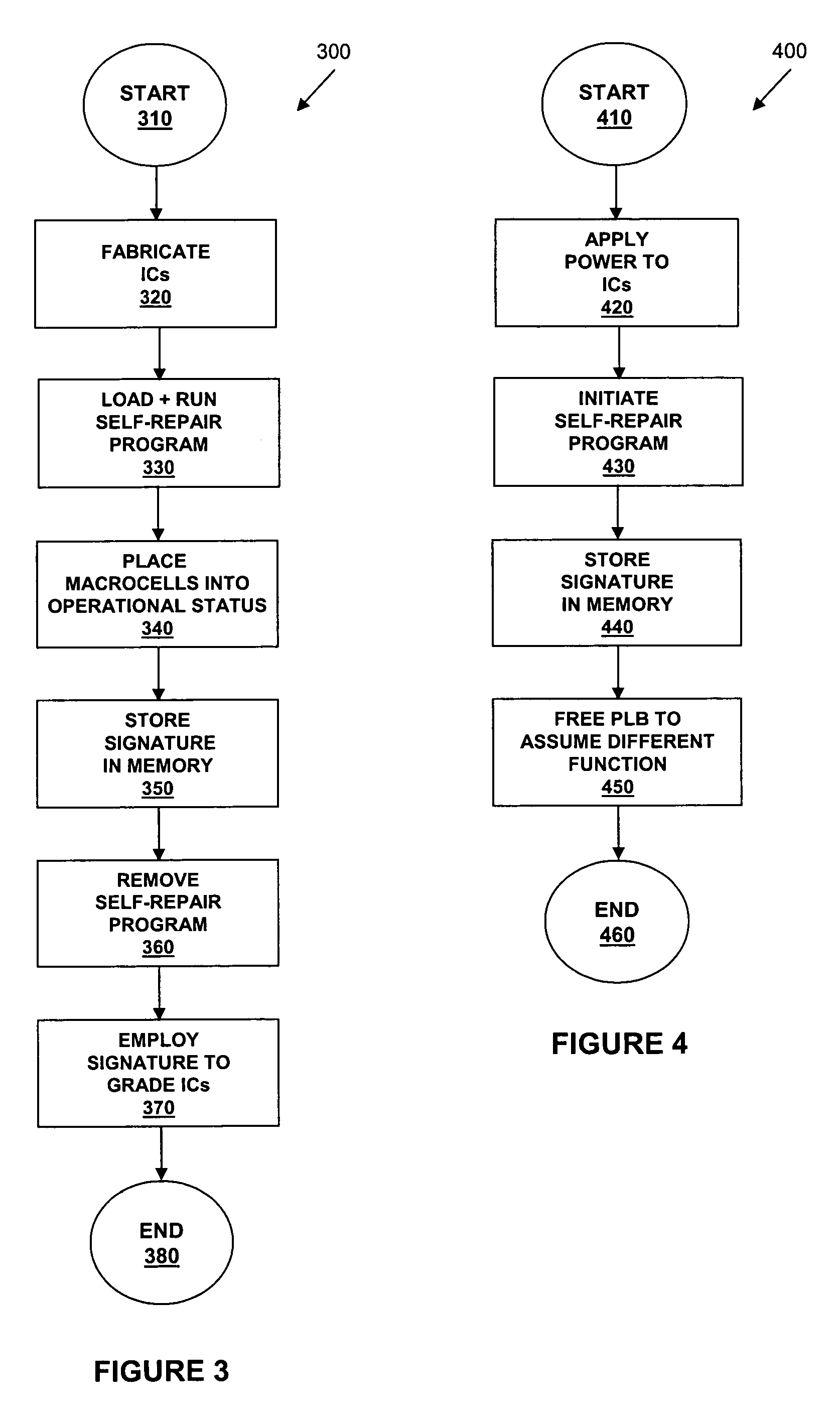Self-repairing integrated circuit and method of operating the same
- Summary
- Abstract
- Description
- Claims
- Application Information
AI Technical Summary
Benefits of technology
Problems solved by technology
Method used
Image
Examples
Embodiment Construction
[0028]Referring initially to FIG. 1, illustrated is a block diagram of an ASIC, generally designated 100, incorporating a PLB and self-repair program constructed according to the principles of the present invention. Those skilled in the pertinent art should understand that the ASIC 100 could be a WSI. Those skilled in the pertinent art should also understand that the scope of the present invention encompasses ICs of lesser scales of integration than VLSI.
[0029]The ASIC 100 is illustrated as including a plurality of hard macrocells 110, 111, 112, 113, 114, 115, 116, 117. The hard macrocells 110, 111 are interchangeable DSP hard macrocells. The hard macrocells 112, 113, 114, 115 are interchangeable RAM hard macrocells. The hard macrocells 116, 117 are interchangeable MAC hard macrocells.
[0030]A glue bus 120 interconnects the hard macrocells 110, 111, 112, 113, 114, 115, 116, 117, allowing activated ones of the hard macrocells 110, 111, 112, 113, 114, 115, 116, 117 to communicate with ...
PUM
 Login to View More
Login to View More Abstract
Description
Claims
Application Information
 Login to View More
Login to View More - R&D
- Intellectual Property
- Life Sciences
- Materials
- Tech Scout
- Unparalleled Data Quality
- Higher Quality Content
- 60% Fewer Hallucinations
Browse by: Latest US Patents, China's latest patents, Technical Efficacy Thesaurus, Application Domain, Technology Topic, Popular Technical Reports.
© 2025 PatSnap. All rights reserved.Legal|Privacy policy|Modern Slavery Act Transparency Statement|Sitemap|About US| Contact US: help@patsnap.com



